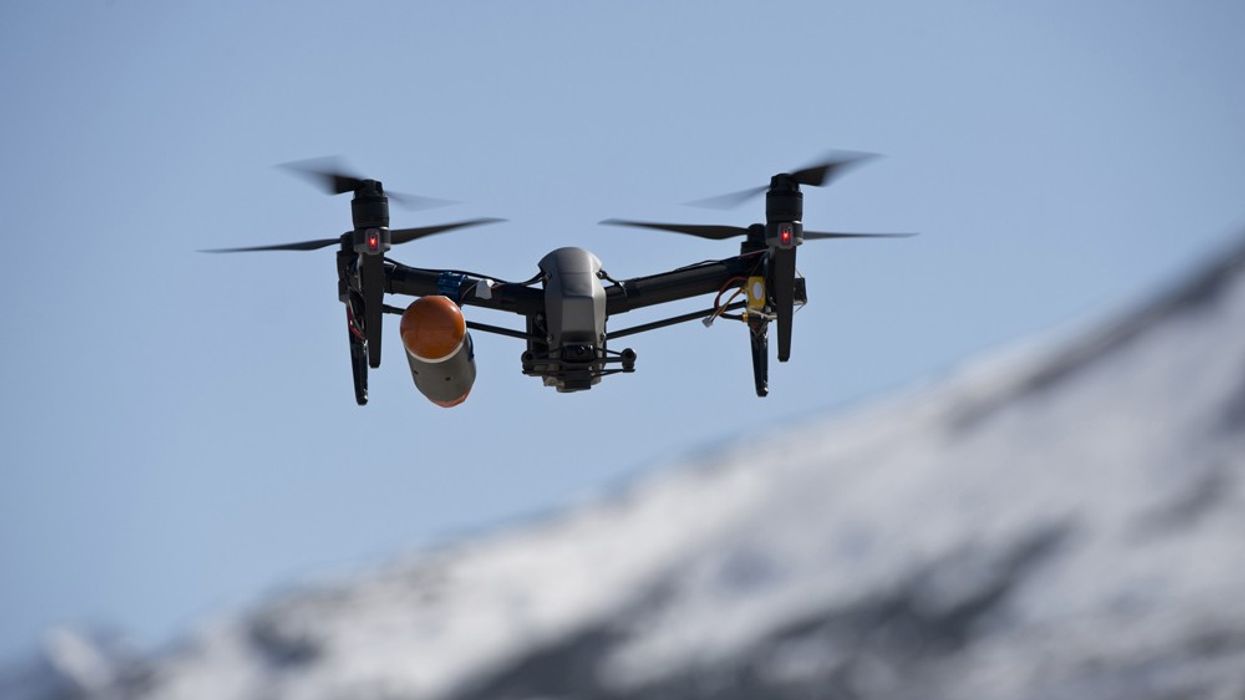Nexus Drone Parachute Just Cleared by FCC to Fly Over Crowds
Flying your drone over crowds just got a whole lot safer (and potentially legal).

Safety always comes first when flying drones, especially when it comes to flying over or around human beings. Flying over crowds is strictly forbidden, and the FAA has been incredibly reluctant to grant commercial and personal drone pilots UAS waivers to do so, having accepted only 16% of over 11,000 applications in 2018. However, this safety device might've just changed the agency's approach to mitigating the risks of injuries caused by falling drones.
Back in 2017, Anchorage-based company Indemnis (Latin for "without harm) partnered with DJI to develop both a set of drone parachute standards and a reliable parachute system that instantly deploys at the first sign of flight anomalies. Three days ago, it has not only officially unveiled the finished product, the Nexus parachute system for the DJI Inspire 2 drone, but has announced that the FAA has validated it as compliant with the new international safety standard for drone parachutes.



Designed to protect not only your drone but those below it, Nexus is a ballistic parachute launcher, which is triggered automatically if the drone begins tilting abnormally or falling. According to Indemnis and DJI, the parachute not only deploys within 30 milliseconds at 90 mph but does so through a rapidly-inflating tube that keeps your drone safe from the parachute lines. (In other words, your drone doesn't get decimated in the process.)
The system also contains a sensor fusion chip that, according to Indemnis President/CEO Amber McDonald, contains “gyroscopes, accelerometers, barometers, filters, a bunch of different sensors” that can detect many different trigger points to activate the parachute automatically.
It’s easily attached to a drone with a quick compression clamp and a single cord.
McDonald also says that the company had to take Nexus through a battery of tests in order to comply with the FCC's stringent safety standards.
Indemnis has tested our parachute systems in thousands of real-world unplanned failure scenarios, and NUAIR’s validation of our work is an exciting step toward making professional drone operations over people safe, routine and productive. DJI’s drone platforms are the clear choice of professionals, and our turnkey packages make it easy for DJI customers to propose advanced, higher-risk operations to regulators around the world.
This makes Nexus the first drone parachute system to be validated by the FCC, which could mean a lot of things. Indemnis is now offering the Nexus system for the DJI Inspire 2 drone, with plans to extend production for the Matrice 200 series and Matrice 600 series drones by late 2019, so this could mean that outfitting drones with Nexus could become standard for manufacturers. It could also mean that the FCC may relax its regulations on flying over crowds of people in the future, allowing you to do so safely and legally.
And that ability won't come cheap. McDonald gave an estimate in an October 2018 interview with Alaska Journal of Commerce, back when Nexus was still in development, that a single system will likely cost somewhere between $5,000 and $12,000. That is certainly not chump change for indie filmmakers and hobbyists, something she acknowledged:
The reality is people are not buying the technical product; they’re buying the ability to fly over people safely. You’re buying it because you want to be able to safely operate your business. It’s a business tool.
Whatever the future holds, whether the Nexus breaks down FCC barriers keeping you from flying over crowds or becomes a financial one for those who can't afford it, this certainly marks a significant milestone in making drone flights safer and more accessible for filmmakers and aerial cinematographers.

 'Little Empty Boxes'https://littleemptyboxes.com/
'Little Empty Boxes'https://littleemptyboxes.com/ 'Little Empty Boxes'
'Little Empty Boxes'









